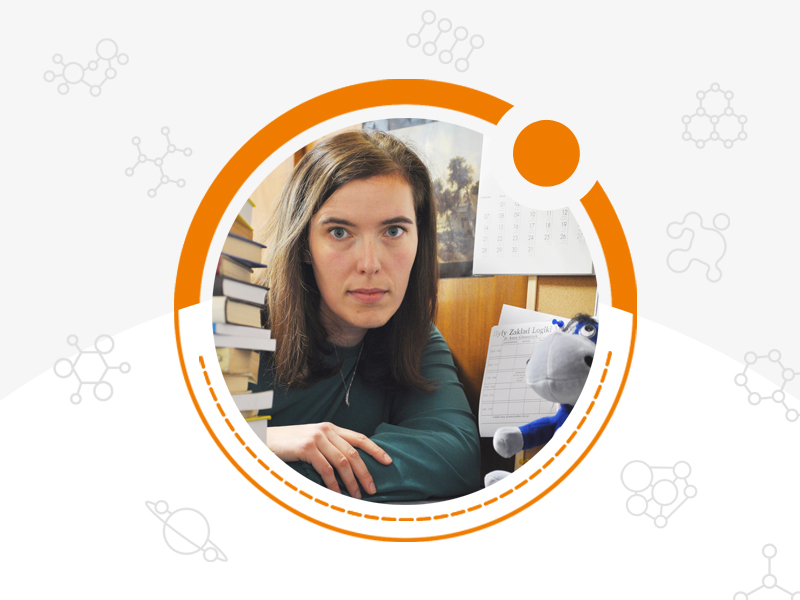
23 November
FIBONACCI DAY

„Save the date” is a series of articles that have been written to celebrate various unusual holidays. The authors of the presented materials are students, doctoral students and employees of the Faculty of Science and Technology of the University of Silesia.
23th November is celebrated as Fibonacci Day.
Fot. US archive
Anna Glenszczyk, PhD
What do a snail shell, “Adam and Eve” by Dürer, a flower of sunflower, and Pachelbel’s Canon in D have in common?
Each of them echoes the most intriguing and most common numeral sequence in nature, known in mathematics as the Fibonacci sequence.
In 1202, the young merchant Leonardo Bigollo (Leonardo of Pisa) returned to his home town from overseas trade expeditions. During his journeys across the Middle East, he was getting into numerous disputes with mathematicians from India and Arabic countries. After he returned to Pisa, he developed the acquainted ideas and published them in the opus called Liber Abaci (The Book of Calculation). The first chapter begins as follows: The nine Indian figures are: 9 8 7 6 5 4 3 2 1. With these nine figures, and with the sign 0 which the Arabs call zephir any number whatsoever is written.
It was the first official definition of the currently used decimal numeral system in the West European civilisation. Until that moment, European scholars and merchants had been using the Roman numeral system, which hampered calculations. We can say that modern mathematics would have been impossible had it not been for the Hindu numeral system (nowadays called Arabic, due to its origin). Despite such a significant part in mathematics, Leonardo is mentioned more often for another fragment of his opus. In the 12th chapter, he introduced a set of mathematical problems, among which there is the following task: A man has one pair of rabbits at a certain place entirely surrounded by a wall. We wish to know how many pairs will be bred from it in one year, if the nature of these rabbits is such that they breed every month one other pair and begin to breed in the second month after their birth.
The rabbit population counted every month is described by the following number sequence: 1, 1, 2, 3, 5, 8, 13, 21, 34, 55, 89, 144, …
Each element of this sequence (except for the first two) is the sum of the two prior to it. It might seem that it does not have any special meaning; however, it seems that no other numbers known in mathematics are as common in nature as these. These numbers made Leonardo of Pisa famous and after his nickname are named the Fibonacci sequence. Probably he did not expect how long-range the consequences of the written by him sentence will be. In the area of mathematics, the Fibonacci sequence appears in so many aspects that the scientific journal Fibonacci Quarterly devoted to these issues has been published for several decades.
Taking a spring stroll, we can encounter the numbers of the Fibonacci sequence with our every step. These numbers are usually associated with a certain structure of spiral. The inner florets in the head of a daisy grow either in a spiral clockwise pattern consisting of 21 arms or a counter-clockwise pattern consisting of 34 arms. Alpine asters feature either 13 clockwise arms or 21 counter-clockwise arms. The record-holder is a sunflower, the seeds of which grow in a pattern of 55 or 89 arms one way or the other.
If we search for daisies and come across a snail, let’s closely observe the spiral of its shell. It is an example of the self-similarity present in nature. Growing out of the shell, a snail cannot fit in it; thus, a snail adds another “chamber” to it, always of the same shape, enlarged by a certain scale. Subsequent chambers are arranging in a spiral around the centre. Yet again, we can observe the Fibonacci sequence. We can create a “geometric snail” by starting with drawing two unit squares side by side. To the longer side of the rectangle created by these squares, we add a square of the size of 2, and to the thus created rectangle, we add another square (of the size of 3), keeping the direction (it can be counter-clockwise direction). The lengths of the subsequent squares create the Fibonacci sequence, and the quarters of the circles defined by each square create a spiral, which is an approximation of a logarithmic spiral. It is a plane curve that intersects all half-lines coming from its pole at a constant angle. In nature, these spirals can be found not only in snails but also in the arms of tropical cyclones or in the chart of the way that a bug flies toward the source of light.
Not only nature has a weakness to the Fibonacci sequence. The results of the division of consecutive elements of the sequence by themselves (13/8, 21/13, 34/21, …) are getting close to the value called the golden number or golden ratio: 1,6180339887498948482045868…
The golden number, and the related to it golden ratio, have been determining beauty canons in painting, architecture, and music for centuries. The Athenian Parthenon facade fits into the rectangle, of which the ratio of sides is expressed by the golden ratio. Such a golden rectangle can be found in the paintings of the great masters, and the golden ratio in the music by the Baroque composers. We can safely say that this topic is extremely vast, and it takes the same amount of time a snail needs to reach the end of the logarithmic curve in order to explore it…






